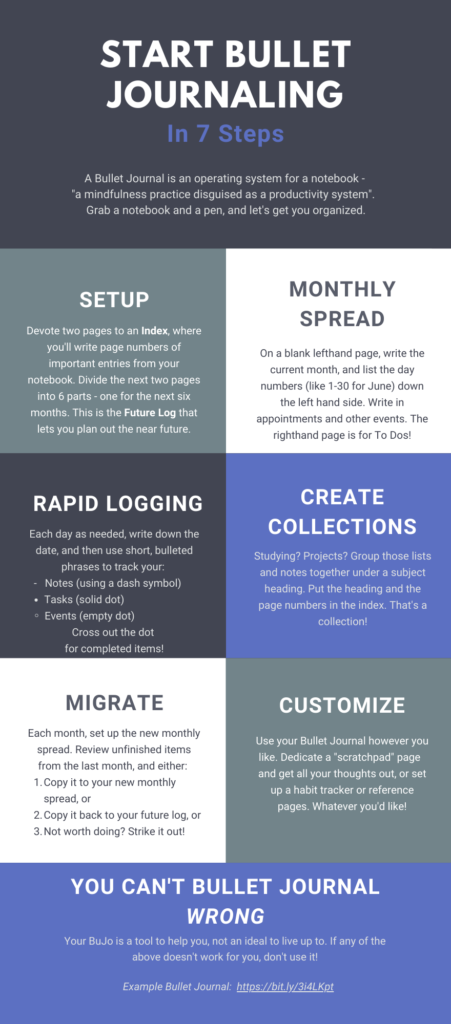A Bullet Journal is an operating system for a notebook. (Yes, like Windows/Mac Os type operating system.)
Ryder Carroll – who developed the system – calls Bullet Journaling “a mindfulness practice disguised as a productivity system.” For me, it’s a very forgiving method that helps track everything in my head and life.
But, “Basic” Bullet Journals?
If you search the web for “bullet journal images”, you’ll find a lot of very pretty, very artistic images. And that’s great! For people who are artistic and like to make their journals look nice, I fully support a beautiful bullet journal.
But that’s SO not me. Here’s a non-ironic sample of my own, personal digital art:

And that’s fine! And that’s why you’re now reading BasicBulletJournal.com
Here’s a sample bullet journal to reference as you read on.
Getting started with a Bullet Journal

For the briefest of descriptions, watch this four-minute video!
The basic seven steps to start bullet journaling are:
- Set up your bullet journal with a 2-page Index, which will help you find entries in your journal; and a Future Log, which lets you see the next few months at a glance.
- Create a monthly spread to track what’s going on in your immediate future!
- Each day (that you feel like it), rapid log your day: write short notes (use the dash bullet), tasks (dot bullet), and events (empty dot).
- You can dedicate a page or more to a collection: give a page a title, and write your study notes, project to-dos, or whatever goes together. And write the page number in your index!
- As you use the BuJo, migrate incomplete tasks. Either move them forward to the next month, or back to the Future Log; or decide that they’re not worth doing, and cross them out!
- Customize your bullet journal…use it any which way you like.
- Remember that you can’t do bullet journals wrong! Whatever parts of the method work for you, is the right way for you.
Final notes: the secret’s in the method
The simple organization is great, but it’s the underlying methods that are magical.
“Rapid logging” – writing down short notes – is very freeing. Your Bullet Journal won’t judge you for writing down a thought, “What if giraffes were sentient?”, right above the details for your next dentist appointment.
The practice of considering and migrating your tasks from each month to the next forces us to consider the worth of each item. Like, if I noticed that I’ve migrated “build a birdfeeder” to three new monthly spreads, one after the other? Maybe it’s not super urgent that I build a birdfeeder. Maybe I can cross that one out, or put it in the Future Log for later consideration.
The Bullet Journal method has been a life raft for me, and I bet you’ll find it helpful too.